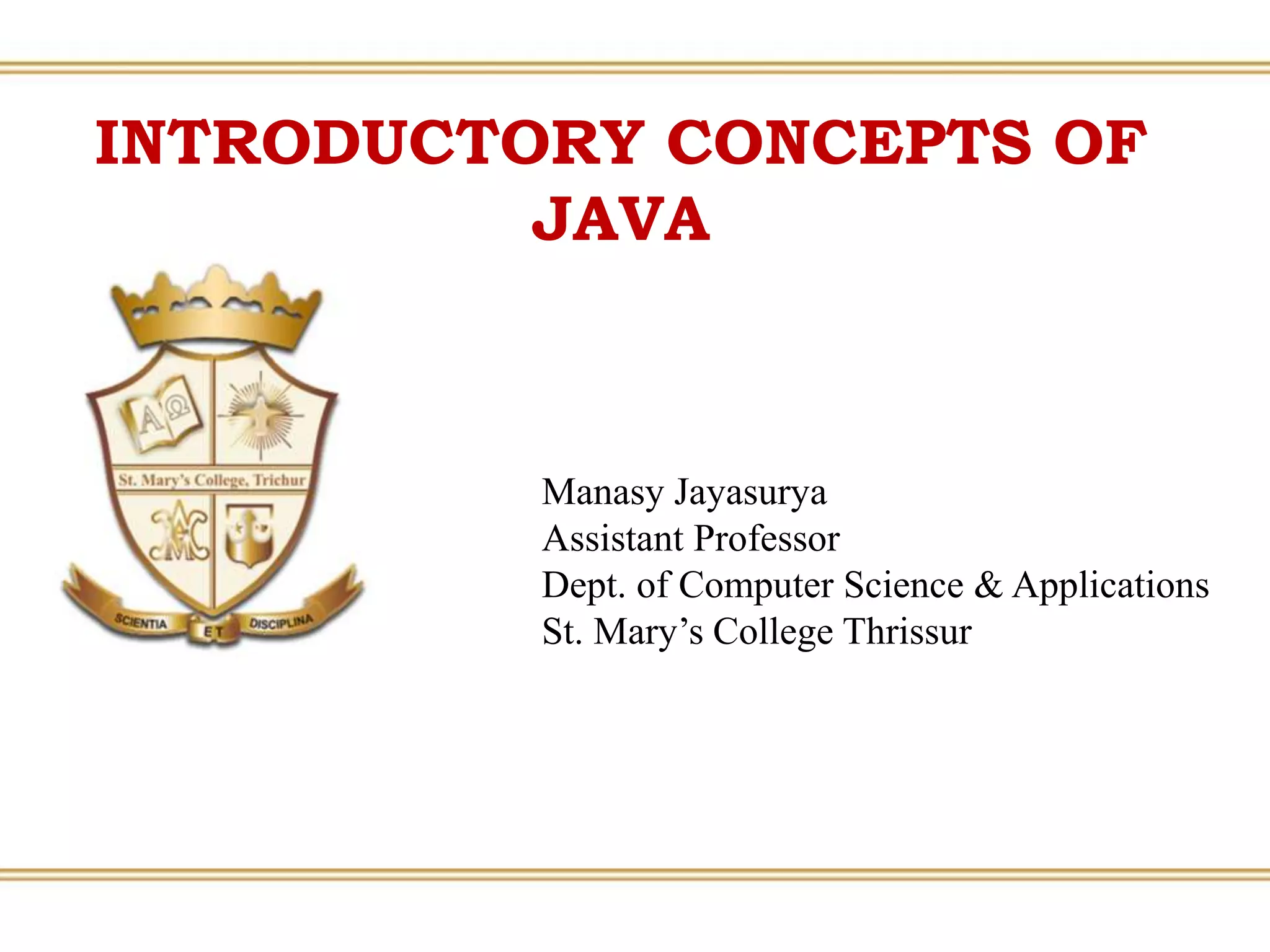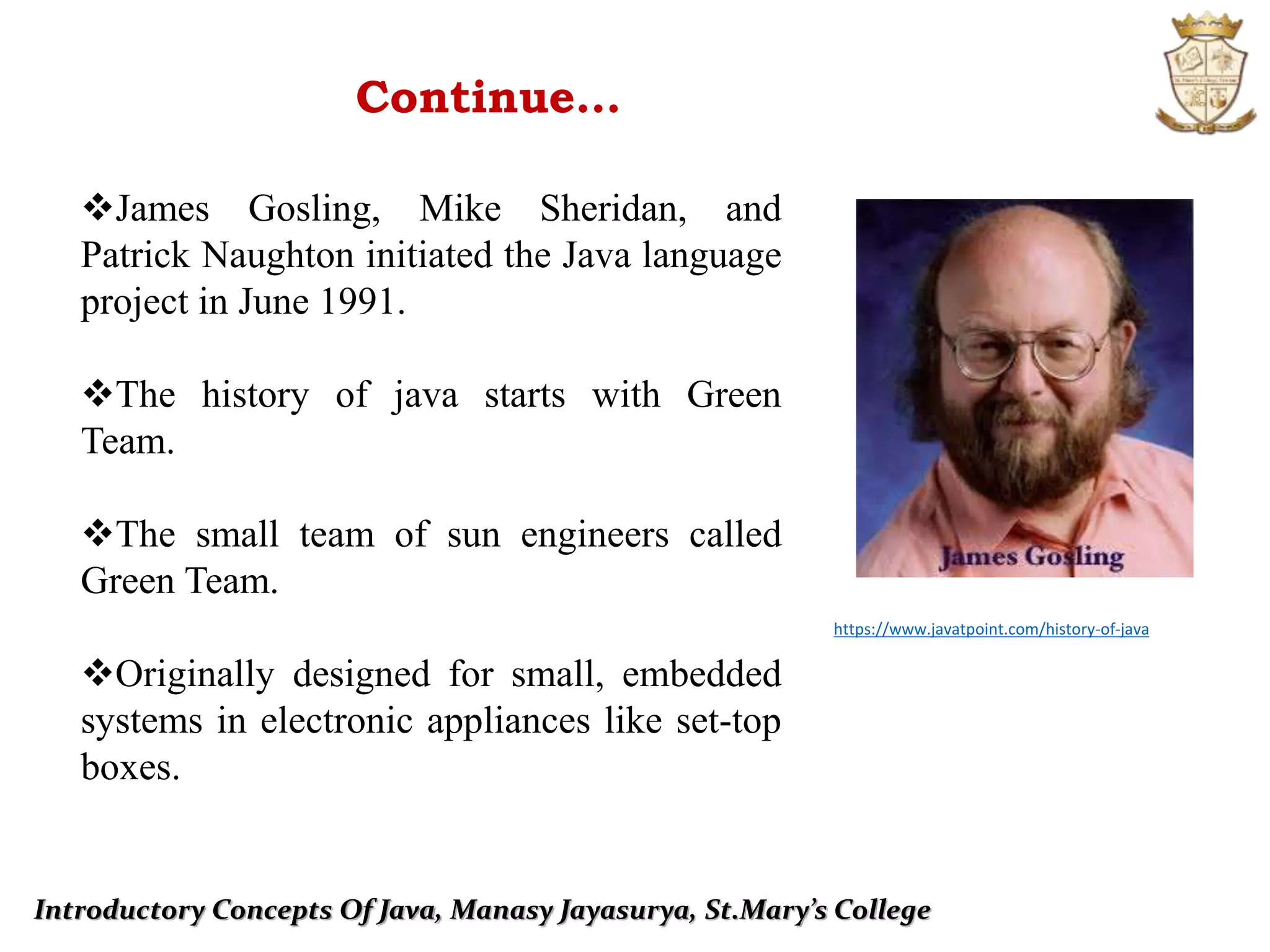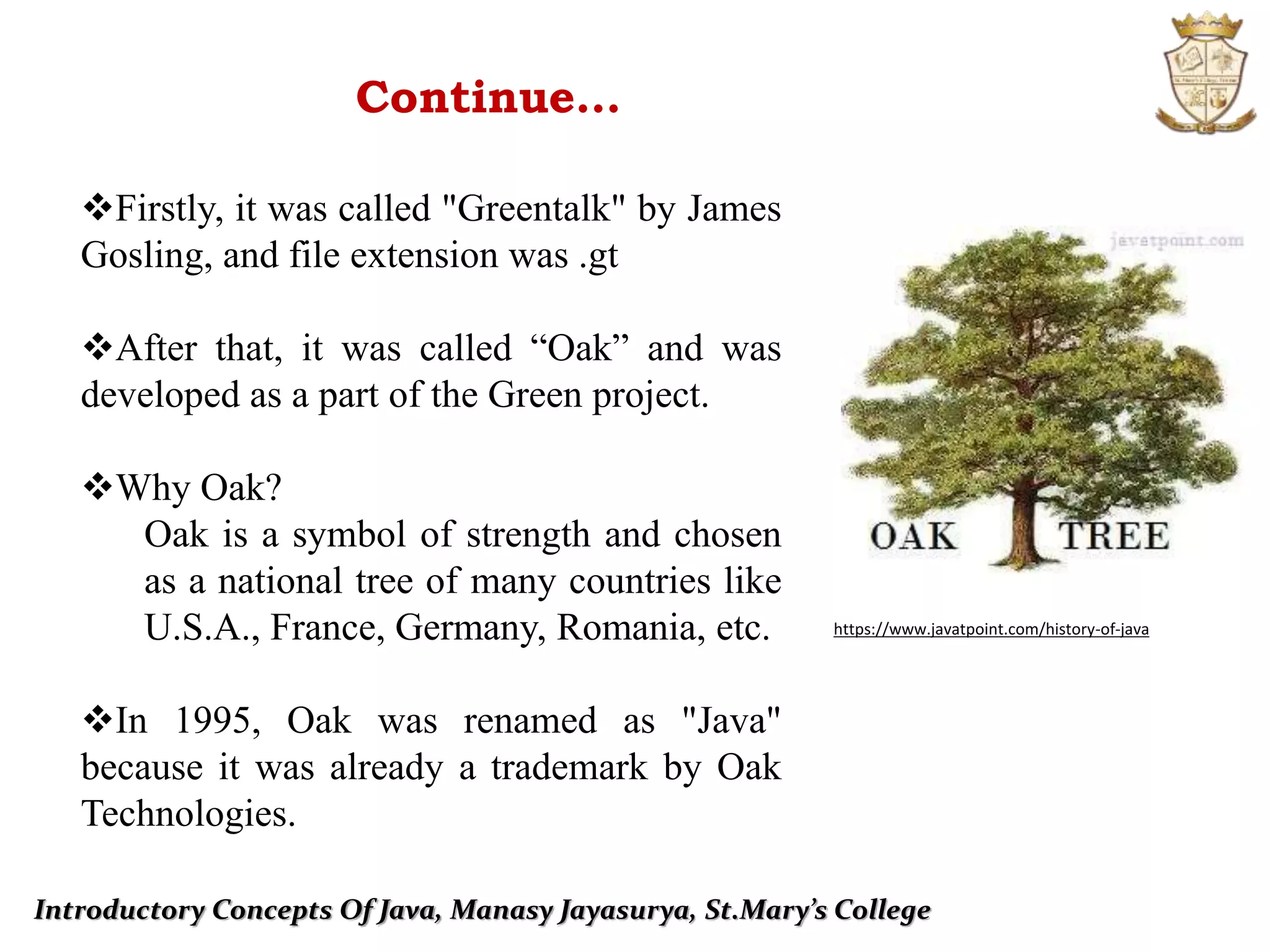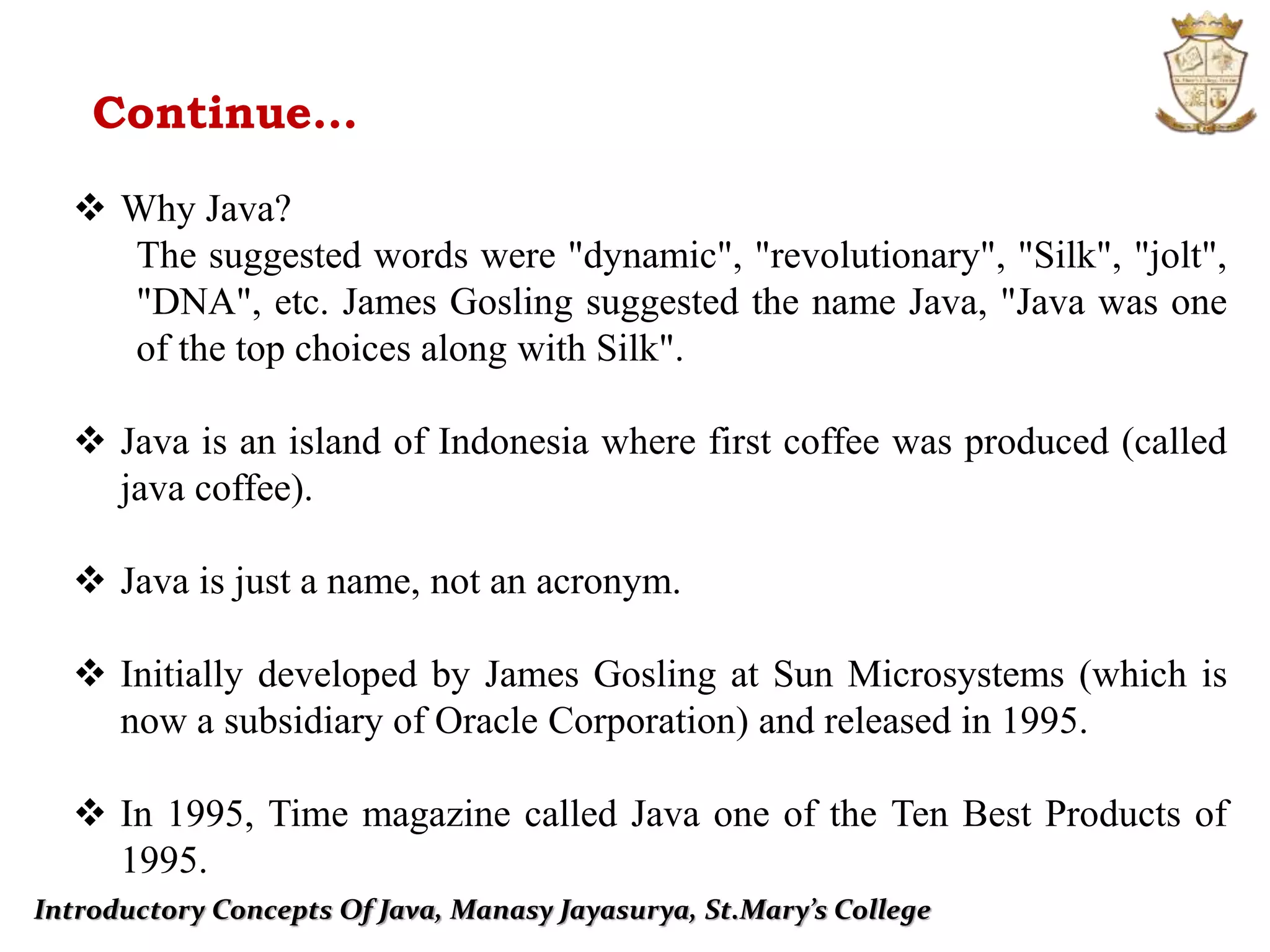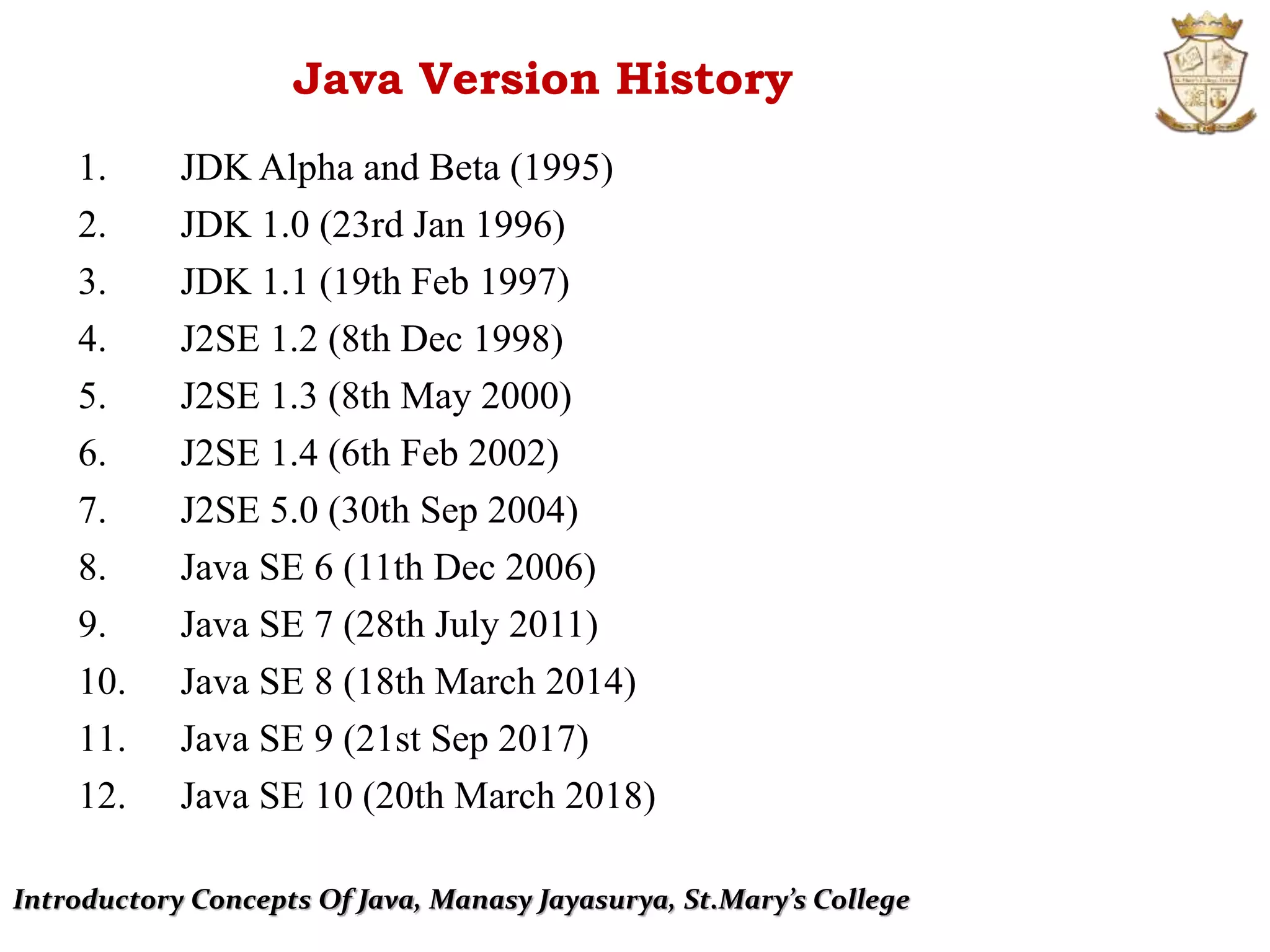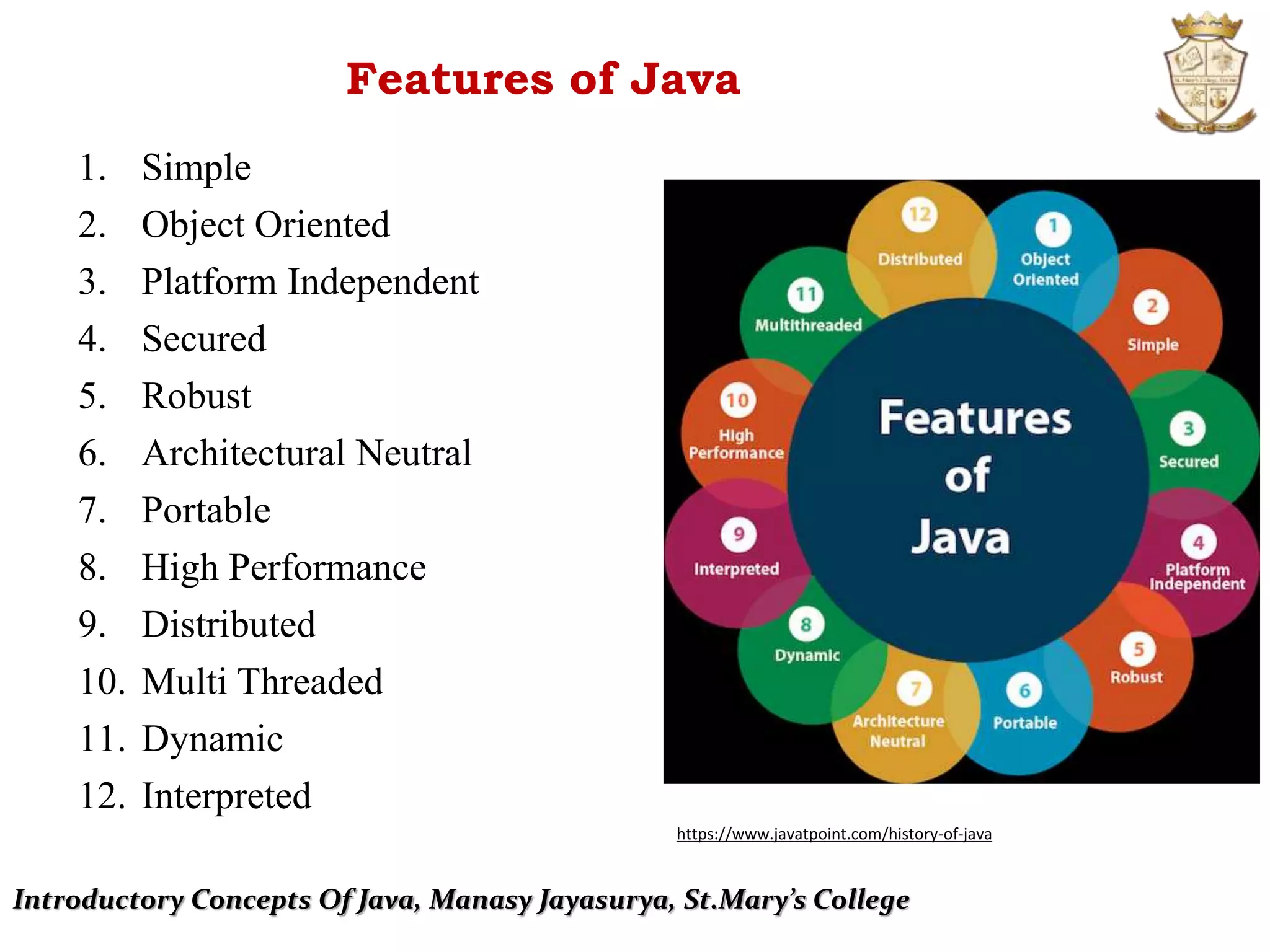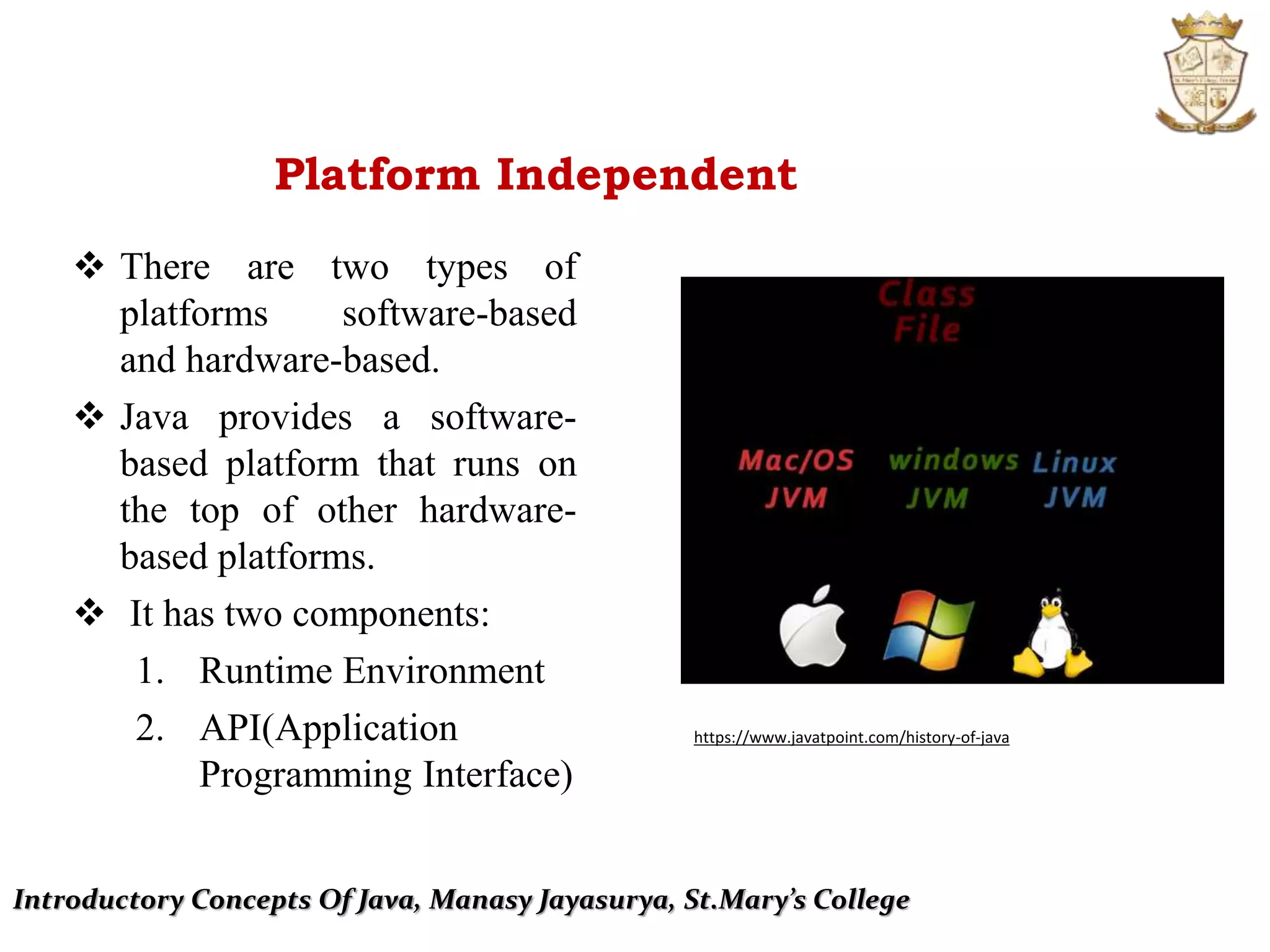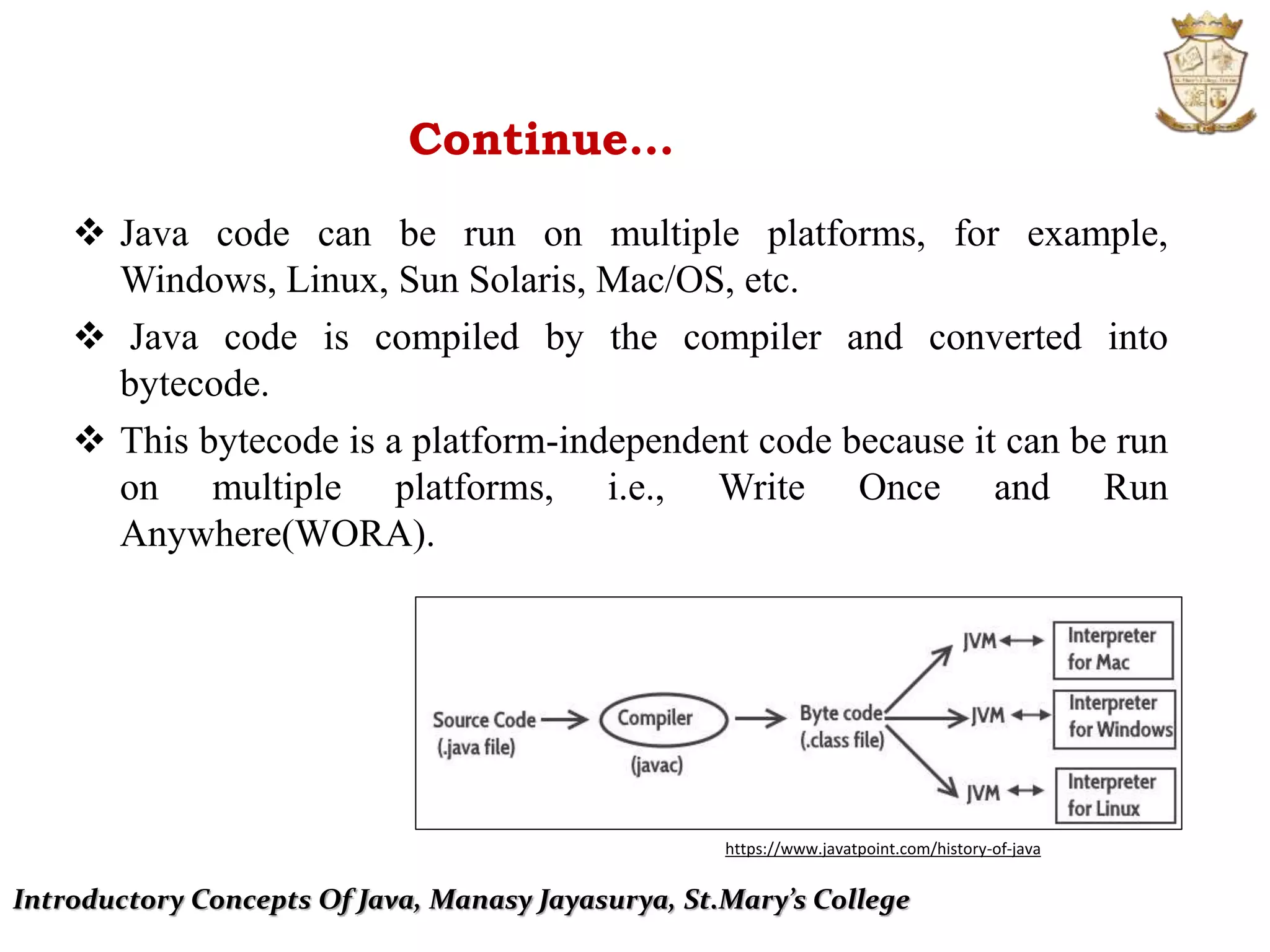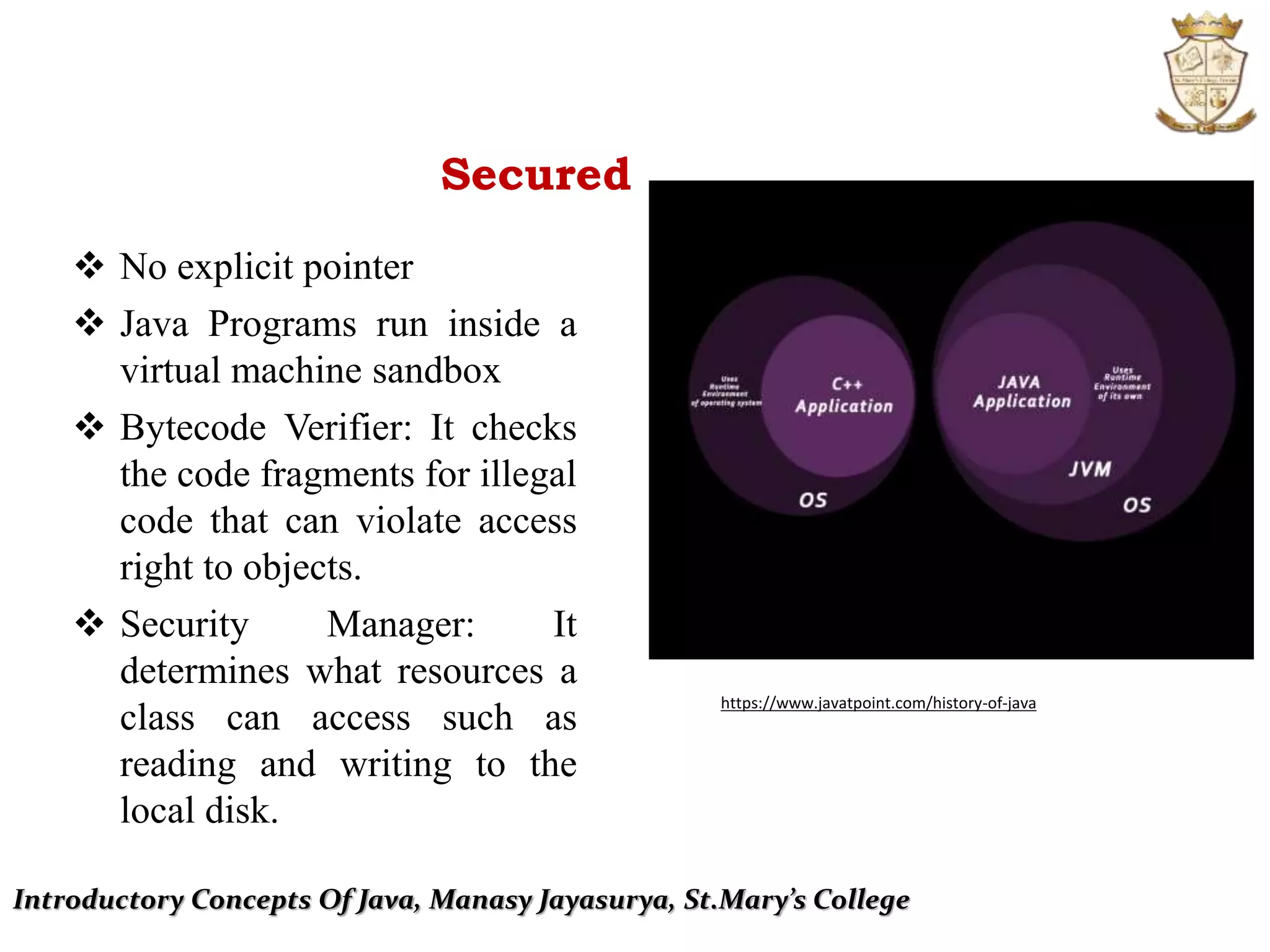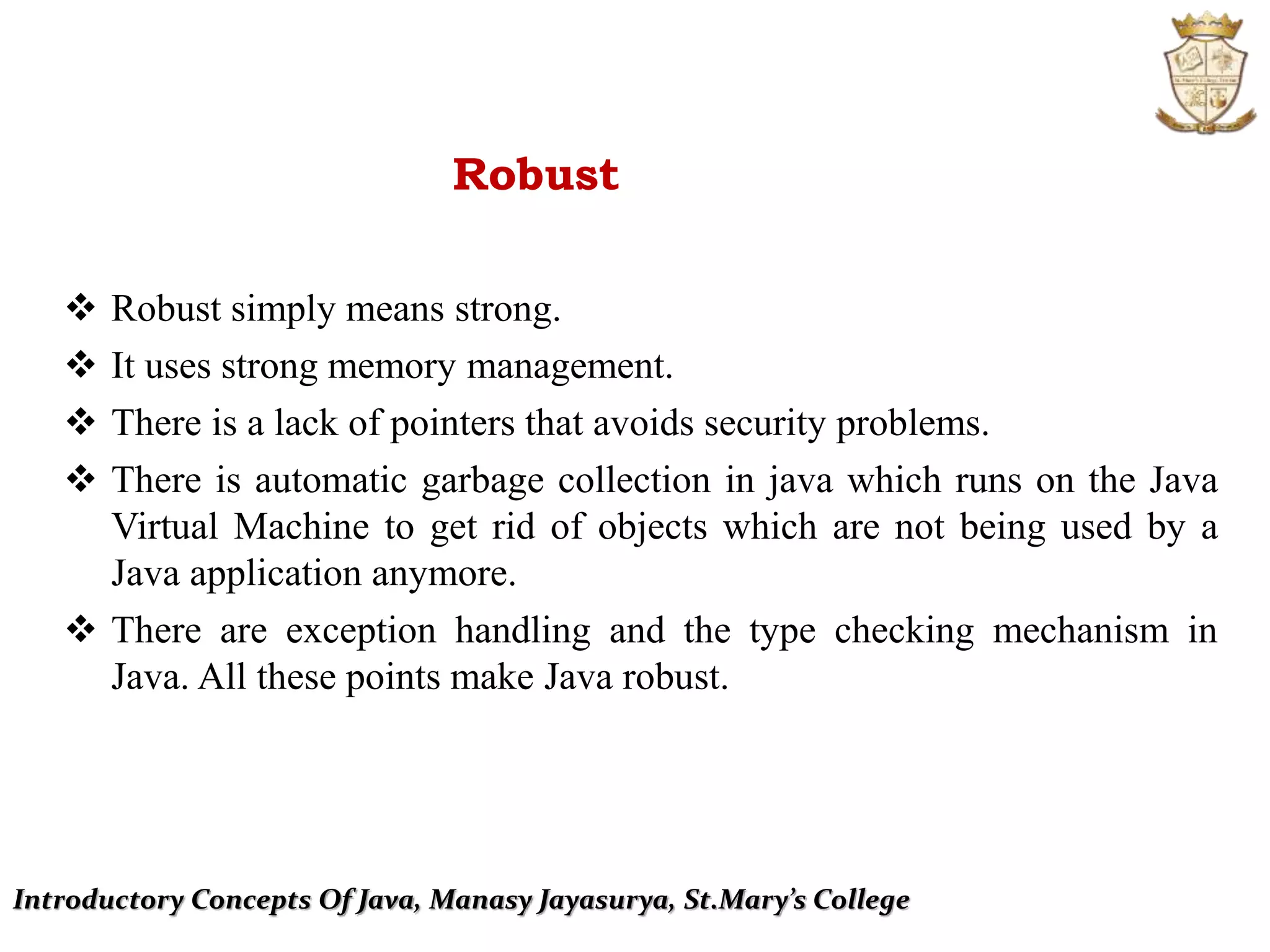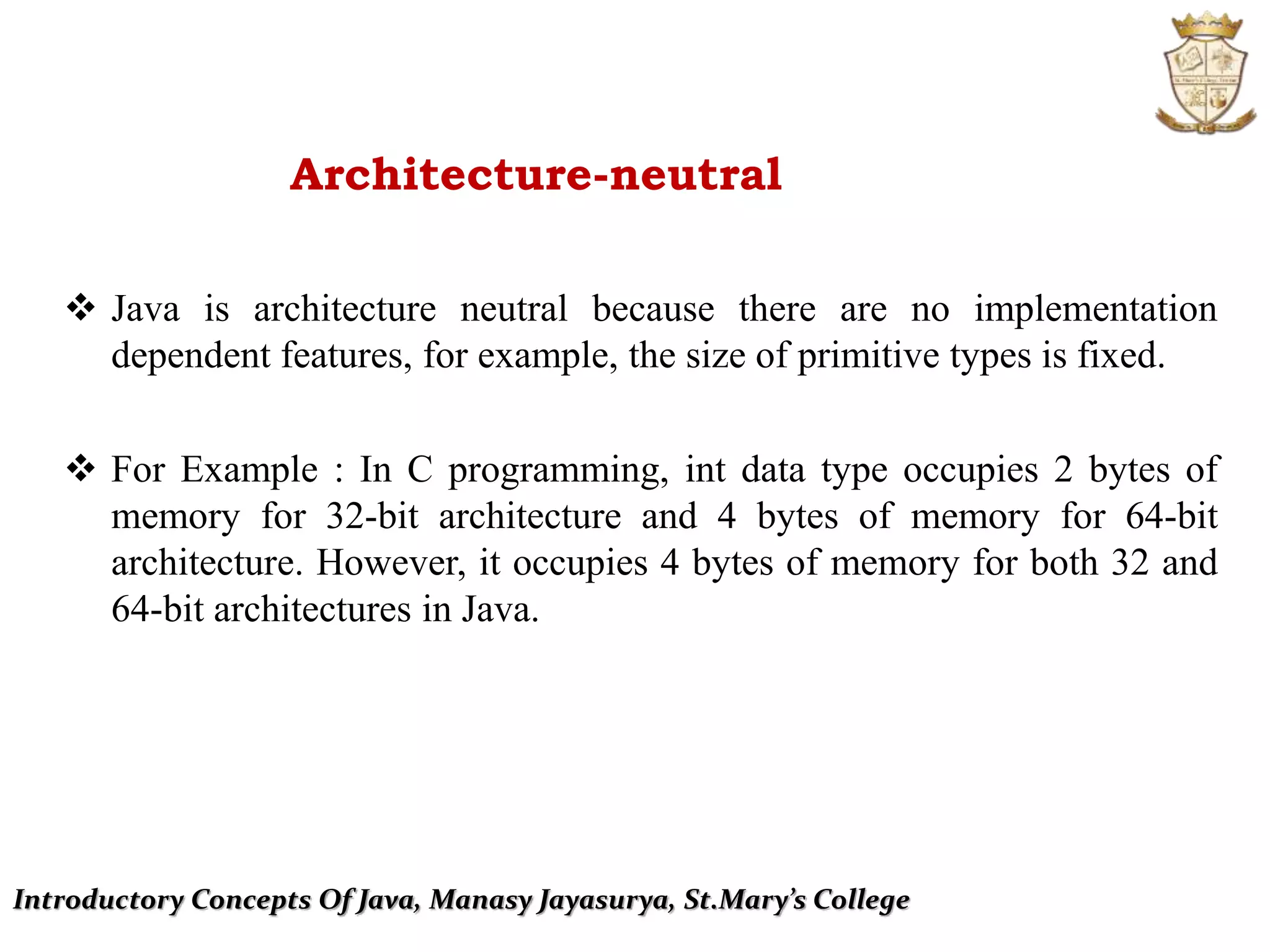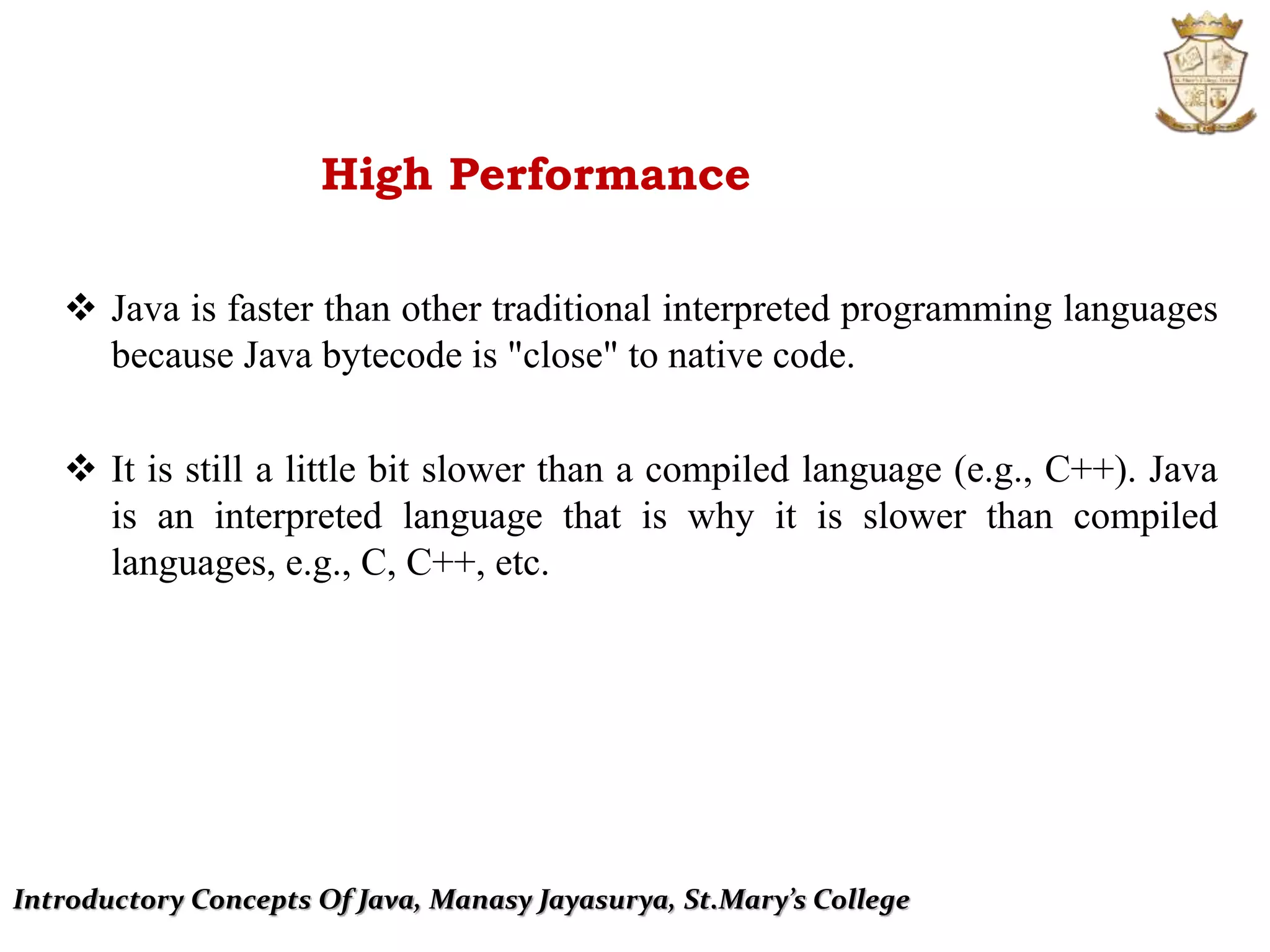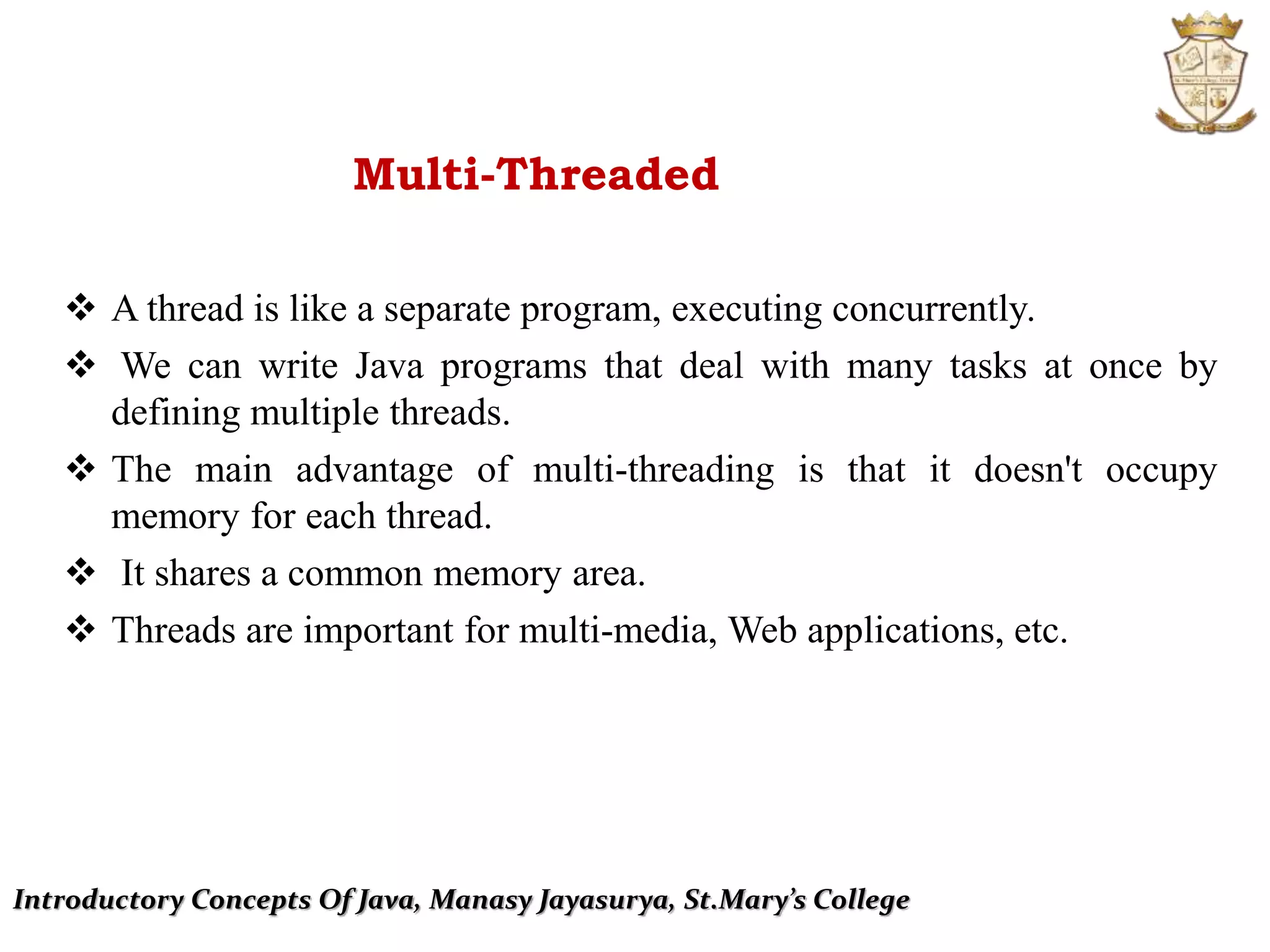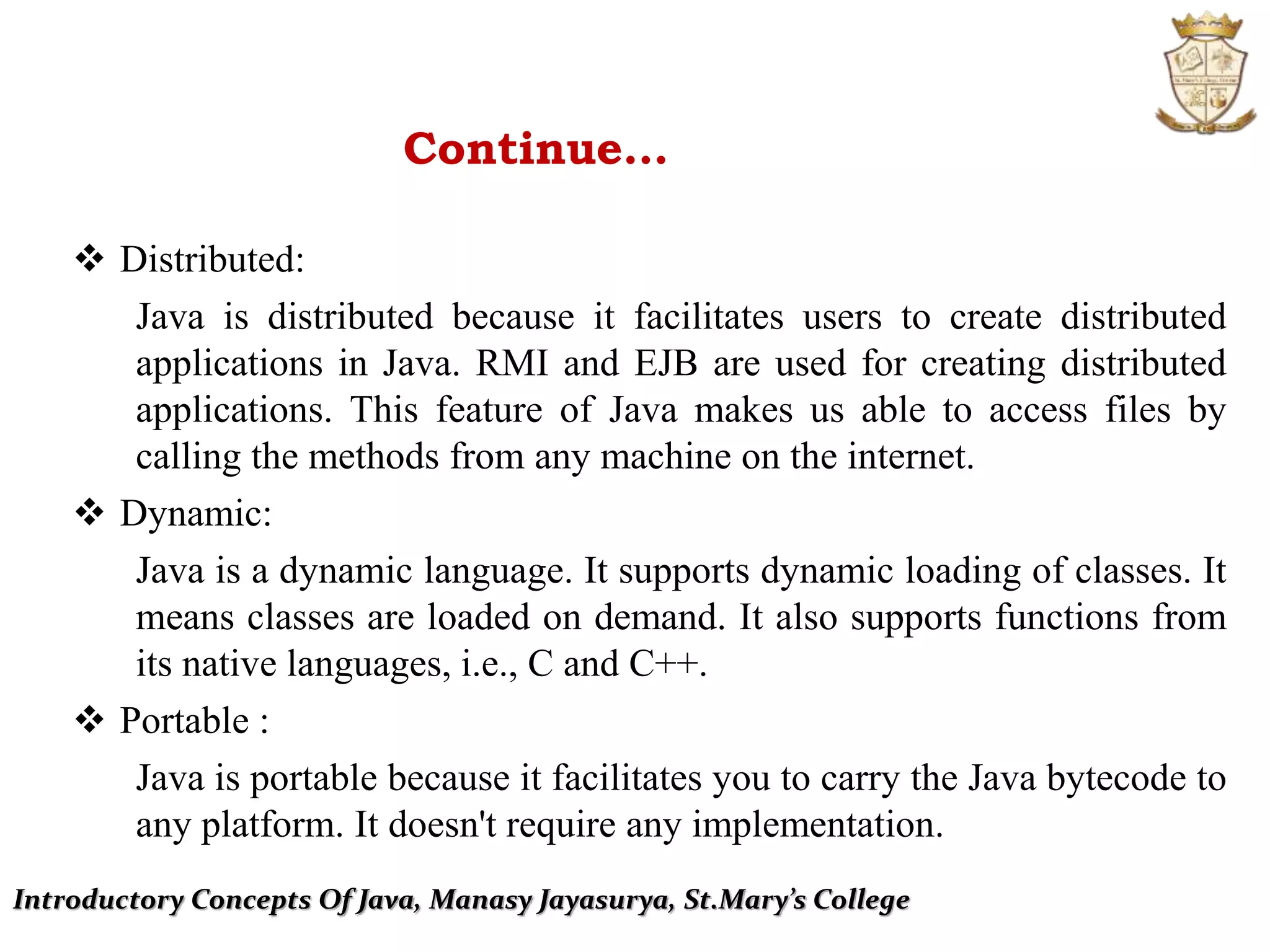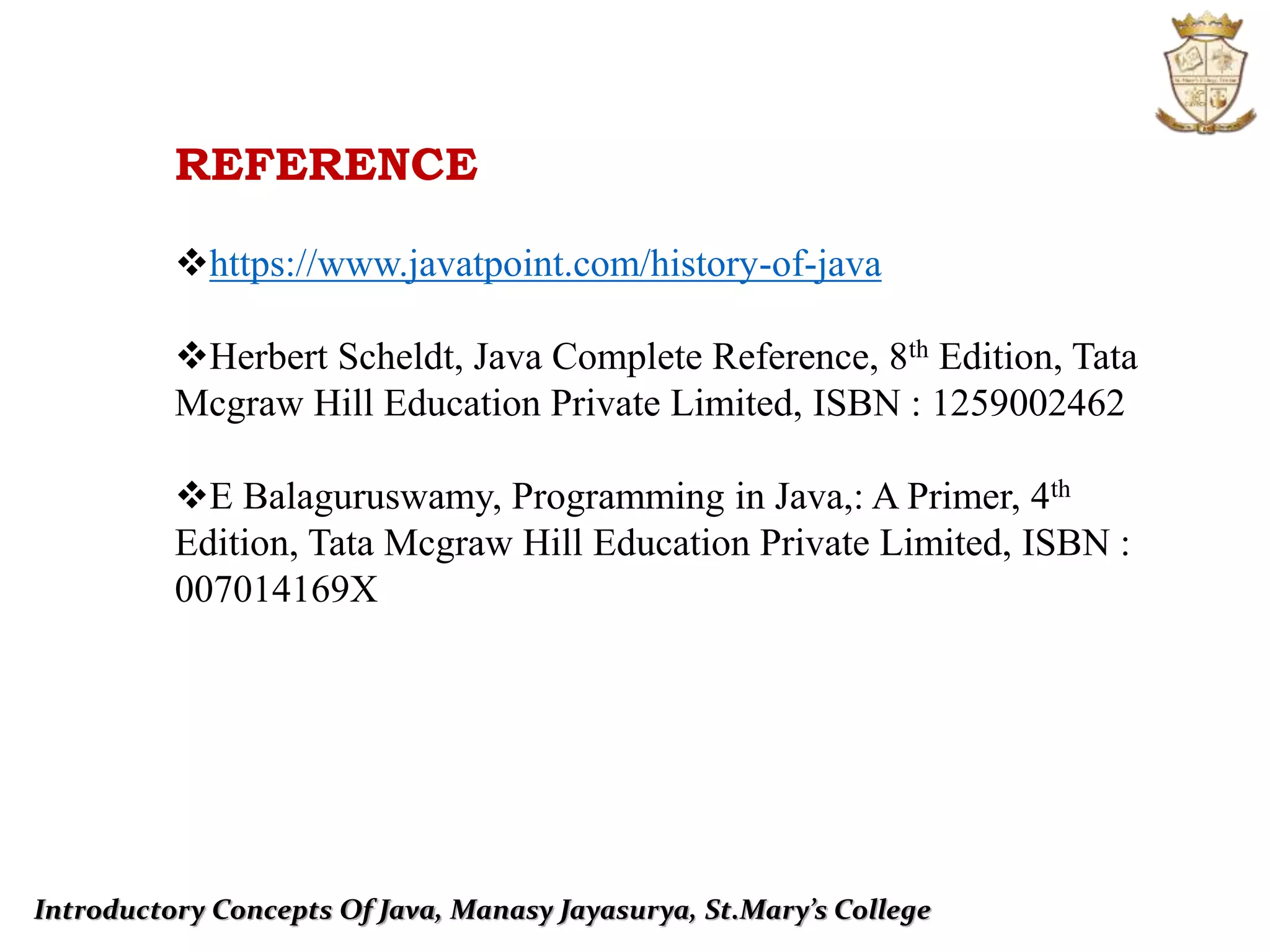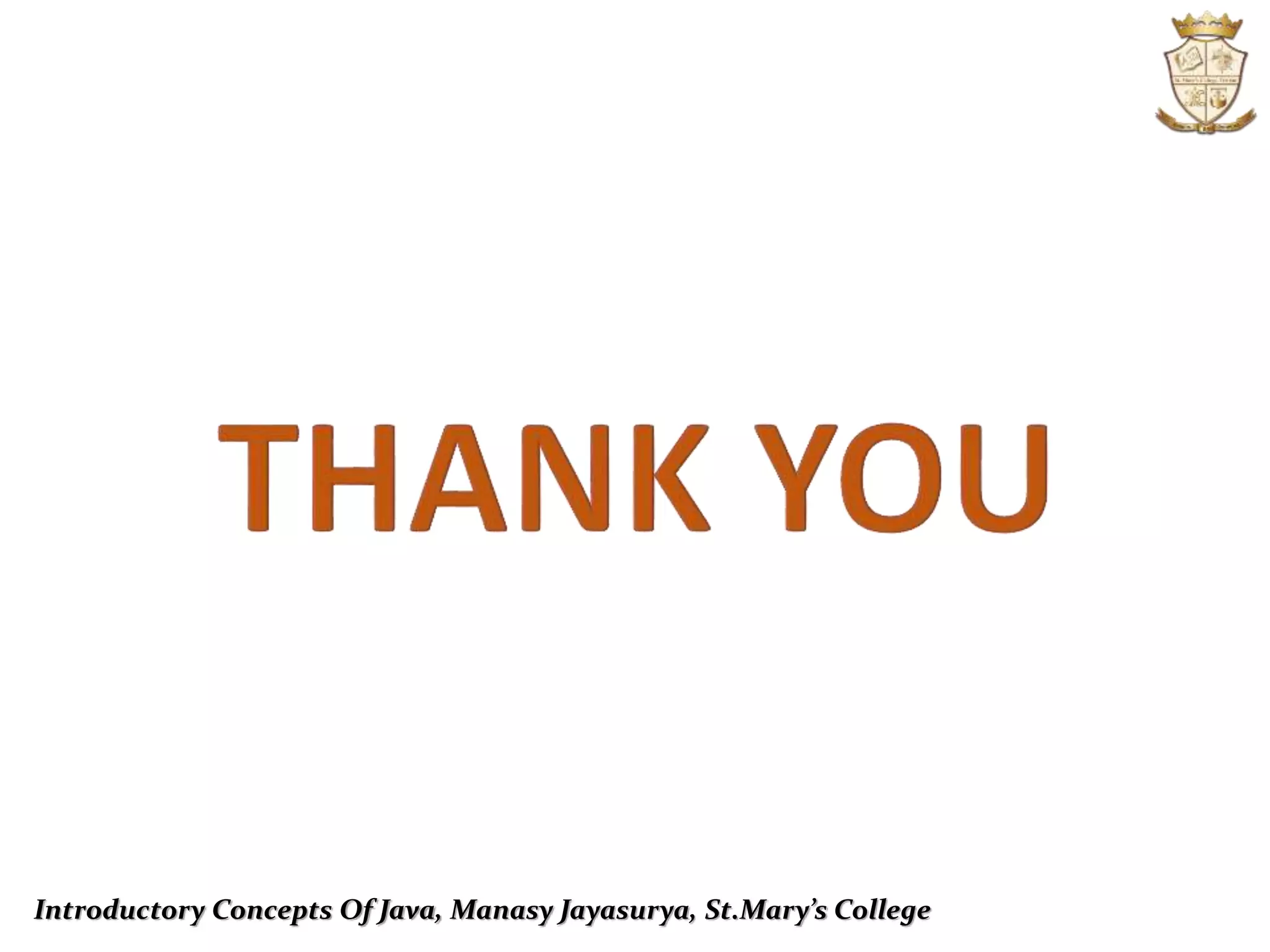Java was originally developed in the early 1990s by James Gosling at Sun Microsystems for use in digital televisions, but it was found to be better suited for internet programming. It was later incorporated by Netscape and is now widely used for internet programming, mobile apps, games, and business solutions. Java was initially called "Oak" but was renamed "Java" in 1995. Key features of Java include being platform independent, secured, robust, object oriented, and high performance. It allows software to run on many systems without modification.
